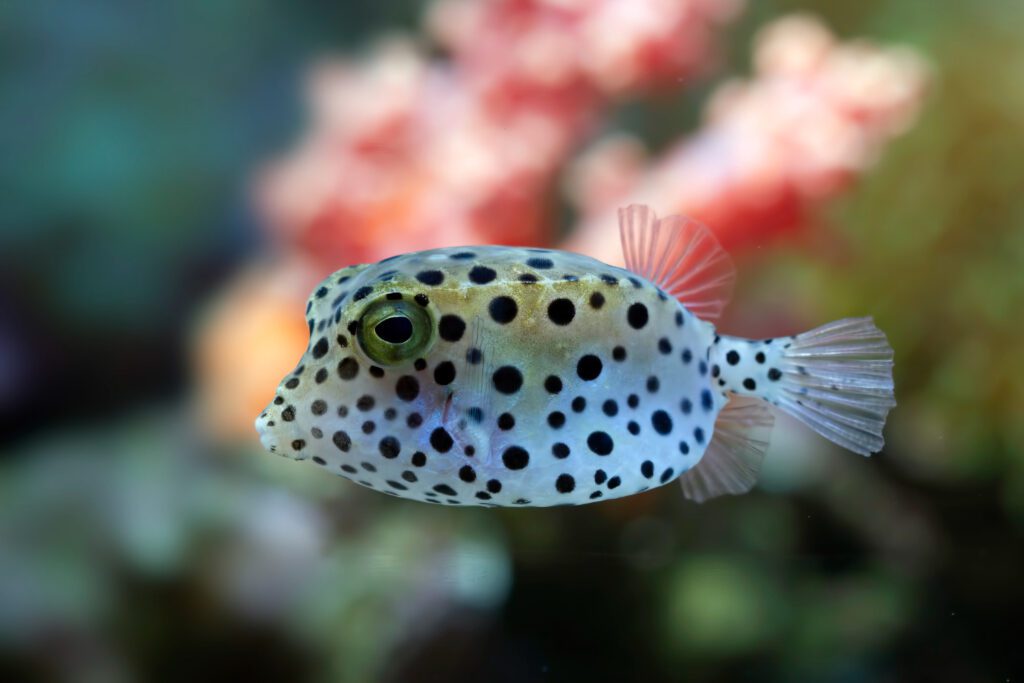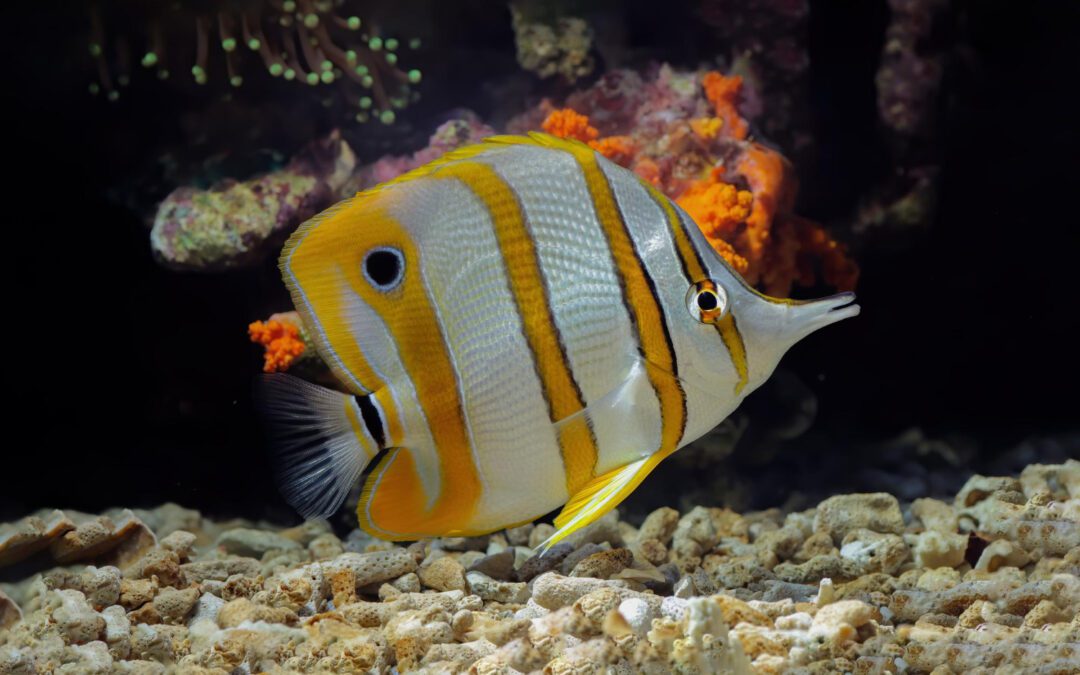Fish With Big Forehead – Some of the strangest species in the world include ocean . These fish are common to the missions of marine researchers, but you may also observe them, particularly when scuba diving. You simply need to be patient, squint hard enough, and wait for your chance.
If you’re not a marine biologist or a scuba diver, this post is your opportunity to see these fish with large forehead and to gain some information about them, including some interesting facts. And if you enjoy keeping fish, you’ll be aware of the kinds to add to your aquarium at home.
1. Fish with big forehead (Beluga whales )
Beluga whales are very sociable marine creatures that live in packs of between 10 and 100 people. These whales live in arctic and subarctic seas and may be found all around the planet. They are extremely adaptive animals that can survive in both freshwater and saltwater habitats.
Beluga whales are stocky and between the size of a dolphin and a real whale.
The beluga whales’ white or whitish-grey hue is what sets them out most, but the creatures also have a unique forehead that houses an organ called a melon. The creatures can emote and produce a variety of noises, such as whistles, chirps, and squeals, thanks to the melon’s pliable fatty tissues.
2. Green Humphead parrotfish
Fish with big forehead and chin-Reefs in the Pacific and Indian Oceans are home to green humphead parrotfish. They have an unusual mouth with a bill that looks like a parrot’s.
The large hump on the green humphead parrotfish’s forehead serves numerous purposes. The fish has evolved to be able to smash even hard coral, using the hump to break off chunks of coral for simple digestion. This adaptation helps because it allows them to consume coral, which no other animal can, thus eliminating all food competition. The fish also use the hump for protection since they may headbutt other fish during mating or feeding competitions.
These tropical fish have the ideal body forms and stunning colour to attract you into keeping them in your tank. It is not advised, though, as green humphead parrotfish do not adapt well to life in captivity. If you scuba dive close to their home waters, you’ll likely see them if you want to.
3. Dolphinfish
Mahi-mahi, often known as dolphinfish, is a saltwater fish that has a top speed of roughly 60 mph, making it one of the swift swimmers. Although the two species may have the same name, dolphins, they are unrelated. Around the world, the fish likes subtropical and tropical seas.
The dolphinfish’s vivid colors and distinctive characteristics set them apart from other fish species. They have prominent faces, forked-tail fins, blunt faces, and broad forehead.
There is limited study on the functions of the dolphinfish forehead, but what is known shows that this feature aids in the differentiation of males and females. In contrast to their female counterparts, male dolphinfish have a rounder forehead.
The fact that the fish is among the most attractive in the ocean known as fish with big mouth and teeth gives you an idea of why it is highly valued both economically and as a gamefish. It is a typical aquarium fish.

4. Kamfa
Kamfa is a gorgeous decorative fish that you can never find in natural waters since it is created by mating any Vieja species with several parrot cichlid species. Because of this, it lacks a scientific name.
Kamfa’s physique is not its sole distinguishing feature. But also by the nuchal hump, a bulge on its large forehead. To store fat and provide the fish with additional energy throughout the mating season, the hump is made of soft tissue.
The hump may serve as an identifying trait between males and females, much like in cichlids. Other ideas contend that the hump is an appealing feature, with women preferring men with a large forehead.
This fake fish is a favorite among fish aficionados not only because it is colorful but also because it is one of the few that can be interacted with. If you want to buy one, our Kamfa complete guide will help you.
The color of a kamfa fish changes during the course of its lifetime.
5. Oranda
Another species of fish that isn’t found in natural waterways but is common in ponds and aquariums is the oranda, a variety of goldfish.
Although oranda have a large tail fin, the most distinguishing characteristic fish with big eyes, forehead and chin, also known as the wen or crown, which resembles a bubble-like hood. While the wen is still on top of the head, it expands to completely cover the face, obstructing or blinding the fish’s vision and leaving just the mouth exposed. When the fish are around four months old, the raspberry-shaped wen begins to grow and lasts until they are about four years old.
Because orandas are among the friendliest fish, they are frequently seen in aquariums all around the world. Their dazzling metallic scales, which are available in a variety of hues including chocolate, scarlet, black, and blue, make them fascinating to see.
6. Lionhead cichlids
The lionhead, a rheophilic cichlid that is common in the lower Congo River in the republic of Congo and the Democratic Republic of the Congo, is also known as an African blockhead, a humped cichlid, and a buffalo head.
All lionhead cichlids have lengthy snouts, but males may be distinguished from females by their very big forehead and nuchal humps. These cichlids’ nuchal humps get larger with age, just like those of oranda and humphead glassfish. Although nothing is known about the nuchal humps in African blockheads, based on the story, they serve the same functions as oranda.
You can visit local fish tanks instead of the natural waterways to observe these fish because cichlids are widespread and simple to care for.
7. Front cichlids
The fish with big forehead and lips- Fish from East Africa called front cichlids inhabit Tanzania’s Lake Tanganyika. Their large forehead helps them acquire the moniker frontosa for their species.
The blue or white bodies of the front cichlids are all marked with around seven vertical bands. Because of this, it takes fish roughly three years old to be able to tell a male front cichlid from a female. At that point, a nuchal hump on the male’s forehead’s upper side begins to develop.
Some of these fish live up to 25 years, which is a very lengthy lifespan. Because the fish are resilient and simple to manage, they are favorites with aquarium advocates.
8. Sperm Whales
The biggest toothed predators, sperm whales are found all around the planet. They move throughout certain seasons in order to breed and feed.
These enormous whales are distinguished by their enormous heads, which account for at least a third of the animal’s total body weight. Therefore, even when comparing comparably, no fish can equal the forehead of a sperm.
Two spermaceti organs, or oil-filled sacs, are located inside the large forehead. The dailymail reports that experts believe male sperm whales utilize their broad forehead to crush rivals in love and tiny ships.
9. Flowerhorn fish
Similar to Kamfa, flowerhorn are decorative fish that are frequently seen in aquariums because of their vivid colors and distinctively shaped heads. These fish are artificial and can only be found in ponds or aquariums. They were created in Malaysia, Taiwan, and Thailand.
Although flowerhorns are distinguished by their vibrant colors, they also feature bulbous heads with nuchal humps known as Kok on top. This characteristic appearance is shared by both sexes, however it is more obvious in the former.
Conclusion
To finish up, the world underneath the waves is home to an enamoring cluster of goldfish With big forehead. From the friendly beluga whales imparting through their extraordinary melon to the powerful transformations of the green humphead parrotfish, every species recounts an account of endurance and development. The dolphinfish’s appealing tones and the resplendent wen of the oranda goldfish feature the variety of amphibian life.
Moreover, the captivating protuberances of Kamfa, lionhead cichlids, and front cichlids shed light on the charming universe of fish conduct and orientation separation. Finally, the monster brows of sperm whales and flowerhorn fish help us to remember the amazing assortment tracked down in our seas, moving wonderment and interest. Explore fascinating fish with big forehead. Discover their unique adaptations and captivating behaviors underwater. Dive in now!

